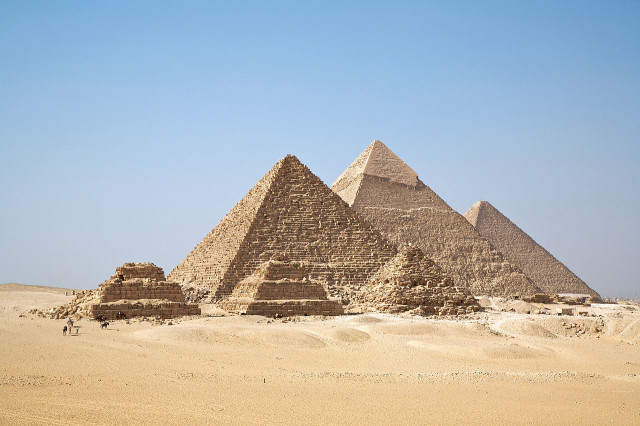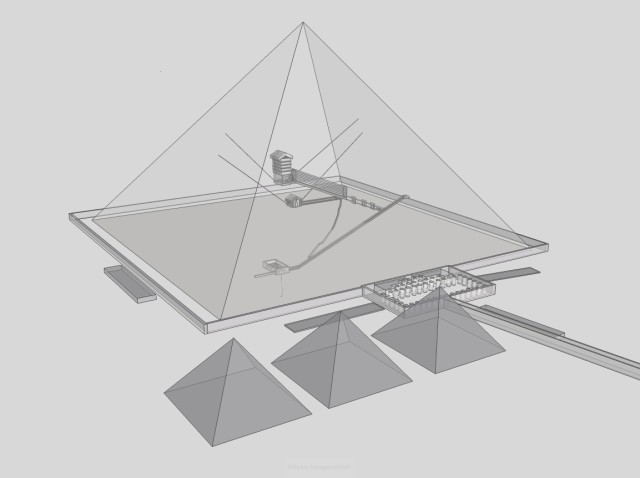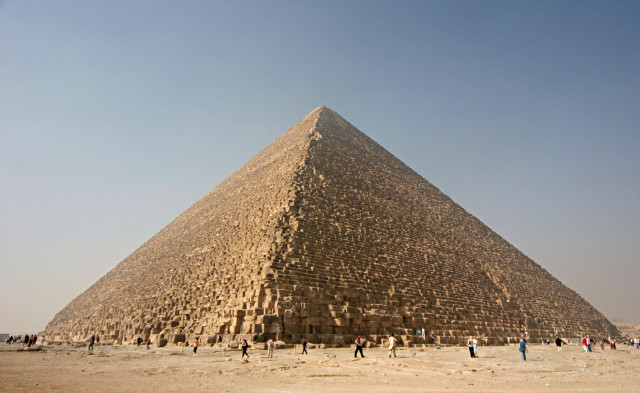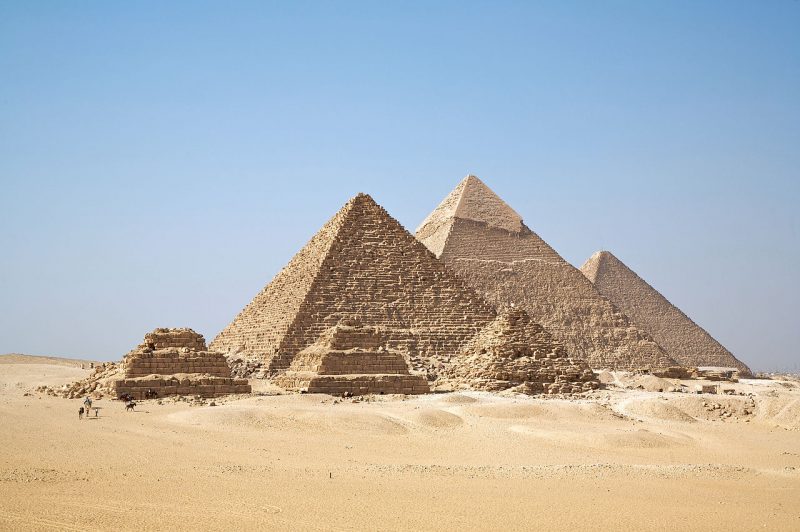To this very day Egyptologists, archaeologists, and scientists have wondered how the Egyptians were able to build the pyramids without any significant tools. It has always been a major debate, because how it was done has remained something that no one can exactly explain.
However, experts are using space particles in order to help them reveal secrets of the pyramids. Just recently, a group announced that they are ready to begin studying the cosmic particles found and collected inside Egypt’s Bent Pyramid. The researchers are hoping that those particles will give them clues as to how the 4,600-year-old pyramid was built.
The president of the Heritage Innovation Preservation Institute, Mehdi Tayoubi, said that the plates that were installed in the pyramid just last month had collected data in the form of radiographic particles known as muons. Muons actually rain down from the earth’s atmosphere. The particles pass through the empty spaces but are absorbed or deflected by harder surfaces.
By studying the particle accumulations, the experts may be able to learn more about the pyramid that was built by the Pharaoh Snefru. Hopefully, this will uncover some of the mystery behind all of the pyramids and provide more accurate theories about the construction of them.
The institute’s vice president, Hany Helal, said that all of those theories are simply theories and hypotheses; not one of them can be accurately proven. He added that what he and the researchers are trying to do is work with new technology, so they can either confirm, change, upgrade, or modify those hypotheses that have been made about how the pyramids were built.

The Bent Pyramid is located in Dahshur, just outside of Cairo. It was given that name because of the bent slopes on its sides. This pyramid is actually believed to have been ancient Egypt’s first attempt at building a smooth-sided pyramid.
The Scan Pyramids project announced in November studies thermal anomalies found in the 4,500-year-old Khufu Pyramid in Giza. The experts are coupling thermal technology with muon analysis to look at the secrets that lie with the construction of several Egyptian pyramids.

Tayoubi had said that the group is making plans for muons testing in Khufu. Khufu is one of the largest of three Giza pyramids. He added that if the researchers find one square meter void somewhere in the pyramid, it will allow the experts to ask new questions and form new hypotheses that may eventually answer many questions.
The team also plans on using infrared 3D scans and lasers to study two pyramids in Giza and two in Dashur. The same technology could also help find a hidden tomb in Tutankhamun’s burial chamber which may belong to Queen Nefertiti.

Khufu’s pyramid, also known as the Great Pyramid of Giza and the tallest, was built by the son of Snefru. Snefru was the founder of the fourth dynasty between the years of 2,575 to 2,465 BC. Khafre’s pyramid, or Chephren, was built by the son of Khufu. The two pyramids in Dashur were also built by Snefru.
The founder of the Paris-based HIP Institute, Mehdi Tayoubi, said that the idea of doing all of this research is to finally find the solution to the mystery behind the pyramids. He added that a similar attempt was made about 30 years ago, but this is the first project on a global level that is looking inside the pyramids.
